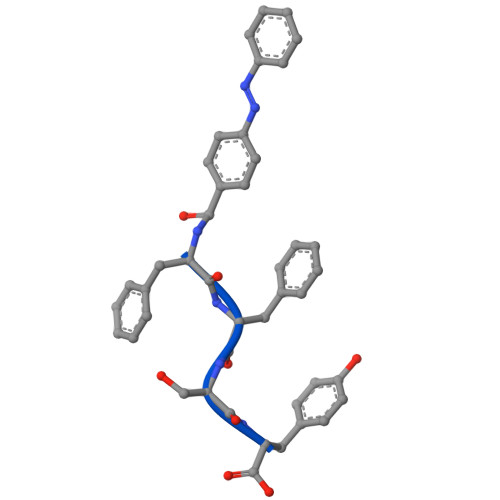Cell-Free Nonequilibrium Assembly for Hierarchical Protein/Peptide Nanopillars.
Guo, J., Zia, A., Qiu, Q., Norton, M., Qiu, K., Usuba, J., Liu, Z., Yi, M., Rich-New, S.T., Hagan, M., Fraden, S., Han, G.D., Diao, J., Wang, F., Xu, B.(2024) J Am Chem Soc 146: 26102-26112
- PubMed: 39255453
- DOI: https://doi.org/10.1021/jacs.4c06775
- Primary Citation of Related Structures:
9BJN, 9BJO - PubMed Abstract:
Cells contain intricate protein nanostructures, but replicating them outside of cells presents challenges. One such example is the vertical fibronectin pillars observed in embryos. Here, we demonstrate the creation of cell-free vertical fibronectin pillar mimics using nonequilibrium self-assembly. Our approach utilizes enzyme-responsive phosphopeptides that assemble into nanotubes. Enzyme action triggers shape changes in peptide assemblies, driving the vertical growth of protein nanopillars into bundles. These bundles, with peptide nanotubes serving as a template to remodel fibronectin, can then recruit collagen, which forms aggregates or bundles depending on their types. Nanopillar formation relies on enzyme-catalyzed nonequilibrium self-assembly and is governed by the concentrations of enzyme, protein, peptide, the structure of the peptide, and peptide assembly morphologies. Cryo-EM reveals unexpected nanotube thinning and packing after dephosphorylation, indicating a complex sculpting process during assembly. Our study demonstrates a cell-free method for constructing intricate, multiprotein nanostructures with directionality and composition.
Organizational Affiliation:
Department of Chemistry, Brandeis University, 415 South St., Waltham, Massachusetts 02453, United States.














